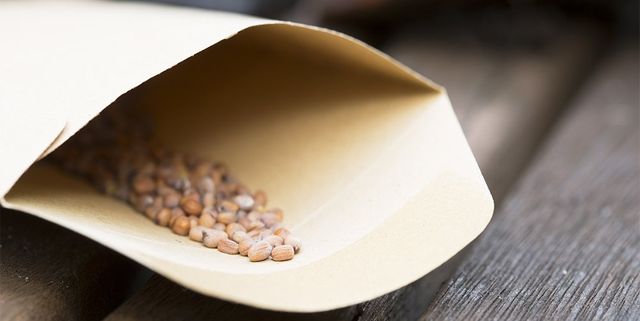You've harvested your summer seeds and now it's time to store them to help you get a jump-start on next season — but storing them improperly could make your dreams of a bountiful garden fall flat. Follow our easy guide to storing your saved seeds that will save you time and money and give you your best harvest yet.
1. Dry the seeds.
If you’re gathering and saving seeds from your own plants, spread the seeds on newspaper and let them air-dry for about a week. Write seed names on the newspaper so there’s no mix-up. Pack the air-dried seeds in small paper packets or envelopes and label with the plant name and other pertinent information. Remember, if you want to save your own seeds, you’ll need to plant open-pollinated varieties. They’ll come back true; hybrids won’t.
You can also dry saved seeds on paper towels. They’ll stick to the towels when dry, so roll them up right in the towel to store them. When you’re ready to plant, just tear off bits of the towel, one seed at a time, and plant seed and towel right in the soil.
2. Stash them somewhere airtight.
Put the packets inside plastic food storage bags, Mason jars with tight-fitting lids, or glass canisters with gasketed lids.
To keep seeds dry, wrap two heaping tablespoons of powdered milk in four layers of facial tissue, then put the milk packet inside the storage container with the seed packets. You can also add a packet of silica gel in with the seeds. Replace every six months.
3. Put the containers in a dry and cool place.
Humidity and warmth shorten a seed’s shelf life, so the refrigerator is generally the best place to store seeds, but keep them far away from the freezer.
4. Toss any seeds pass their prime.
Store each year’s seeds together and date them. Because most seeds remain viable about three years, you’ll know at a glance which container still has planting potential.
5. Prepare for planting.
When you’re ready to plant, remove the containers from the refrigerator and keep them closed until the seeds warm to room temperature. Otherwise, moisture in the air will condense on the seeds, causing them to clump together.
6. Expect a few duds.
Even if you’re organized, methodical, and careful about storing seeds, accept the fact that some seeds just won’t germinate the following year. Home gardeners will find that stored sweet corn and parsnip seeds in particular have low germination rates, and other seeds will only remain viable for a year or two.













